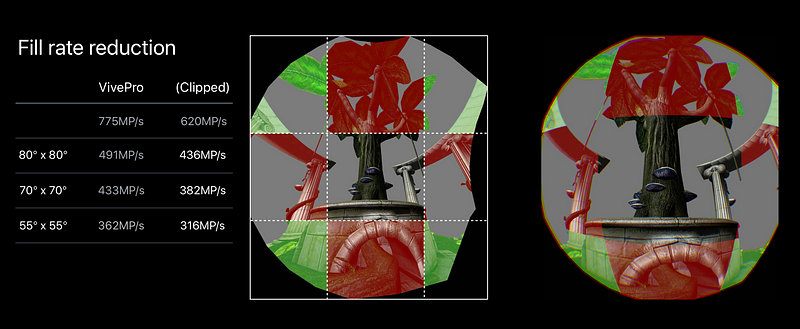Metal for VR
Metal for VR
WWDC 2018
VR on macOS
- Support for HTC Vive Pro
- Two 1440x1600 AMOLED displays, at 615 ppi
- 78% resolution increase
- 37% ppi increase
- Stereo cameras for MR - SteamVR Tracking System 2.0

- Valve SteamVR runtime
- Valve OpenVR framework
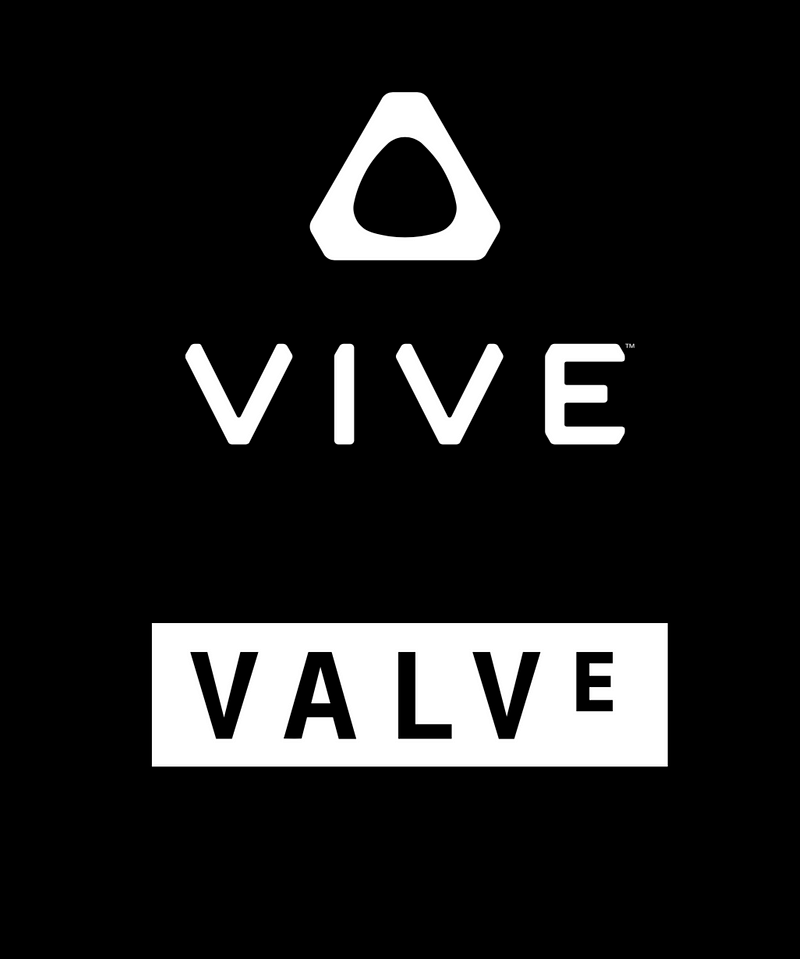
VR Application
Rendering overview
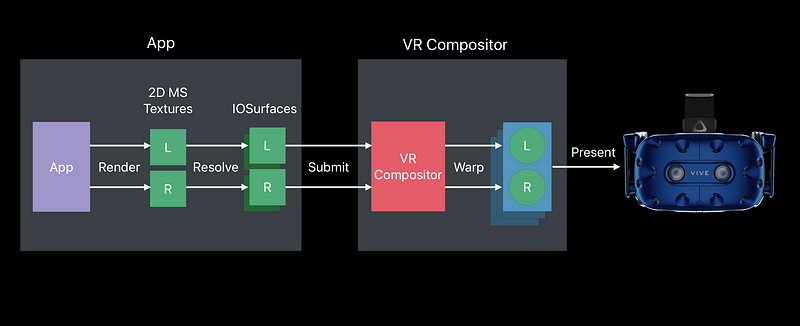
Different rendering patterns depending on MSAA
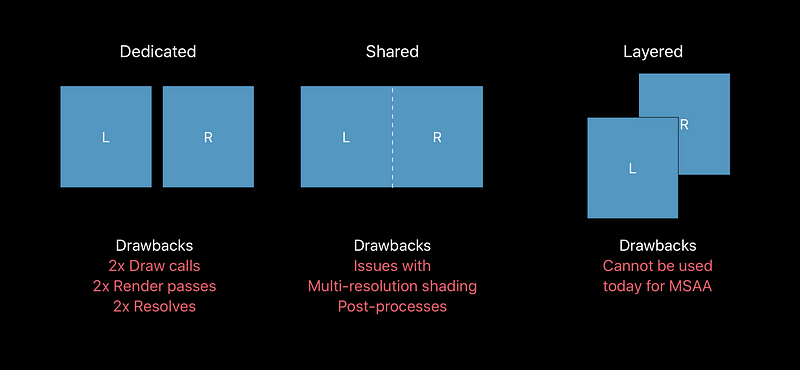
Different rendering patterns unified ( new )
- New Metal texture type
MTLTextureType2DMultisampleArray- Separate control of
- Rendering space
- Views count
- Anti-aliasing mode - Single draw, render, and resolve pass
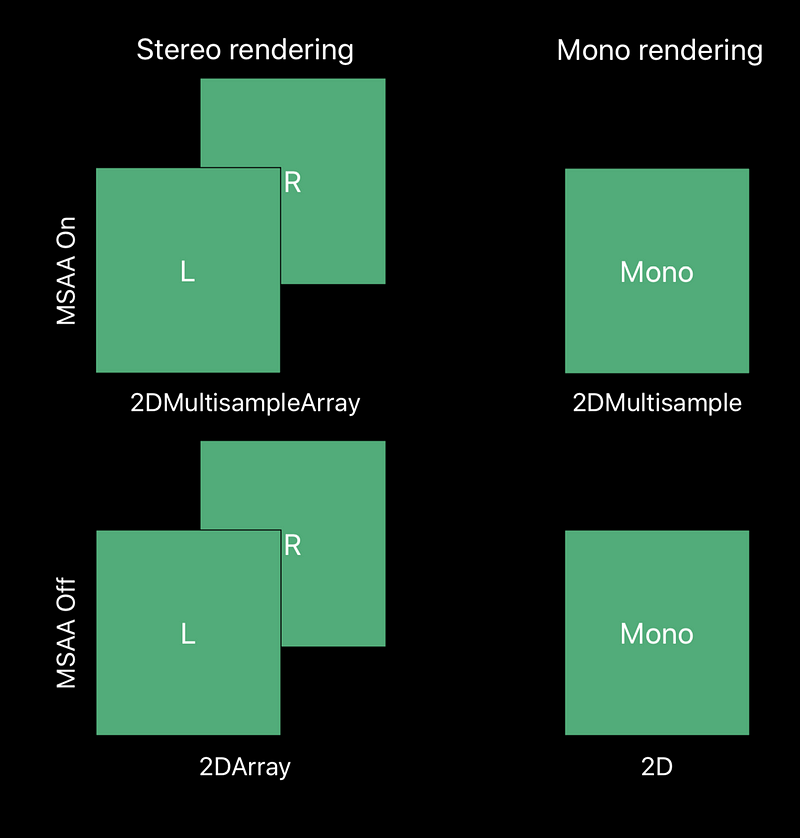
2D multisample array textures ( new )
Application creates 2D MS Array texture for rendering VR content
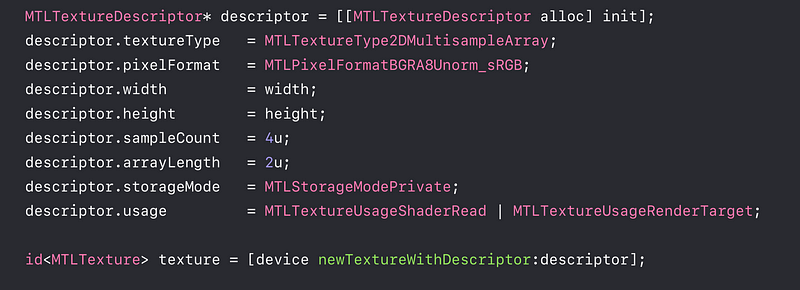

Cross-Process Texture Sharing ( new )
IOSurfaces vs shareable Metal textures
- Ability to share Metal textures between processes
- Shareable Metal textures can have complex structure
- Shareable texture can be used only in scope of single GPU
- Enable advanced VR use cases, but are not limited to them
Standard vs sharable texture creation ( new )
Application creates 2D Array texture that can be shared with Compositor

Passing texture to compositor ( new )
Passing frame for presentation, using shareable Metal texture
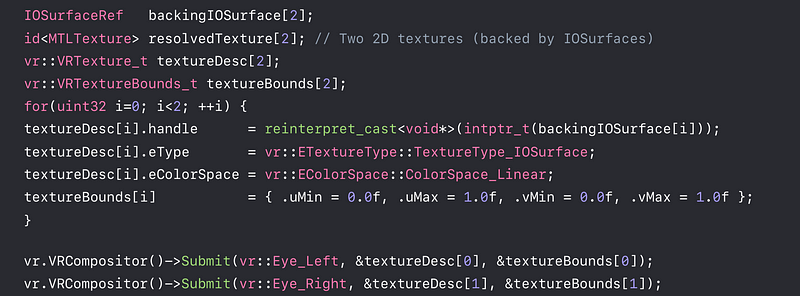
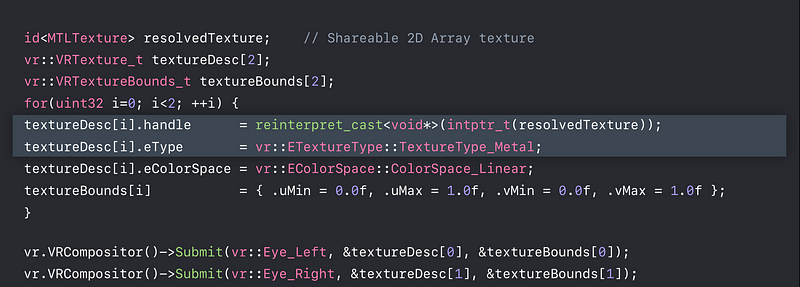
Passing across process boundary
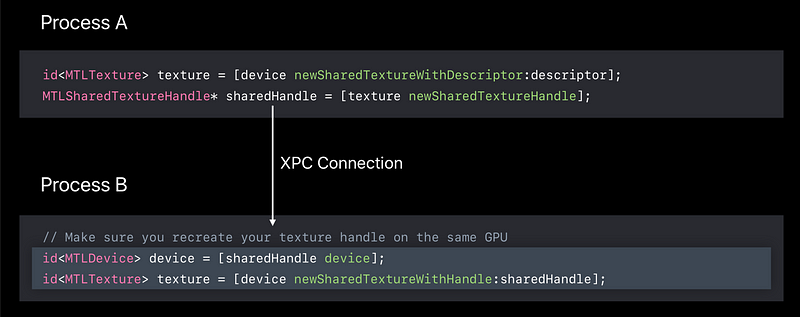

Compositor optimizations

Frame Pacing
- Single vs Multi threaded application
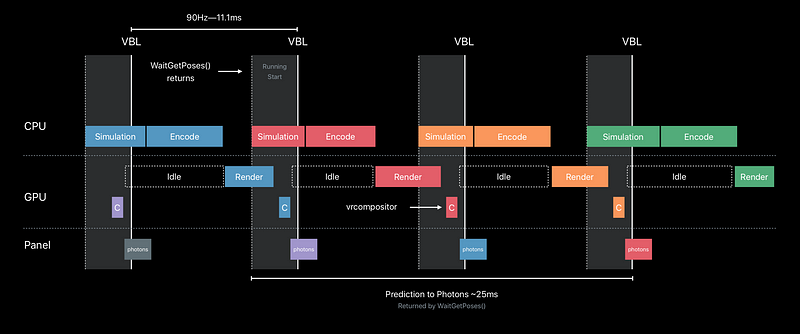
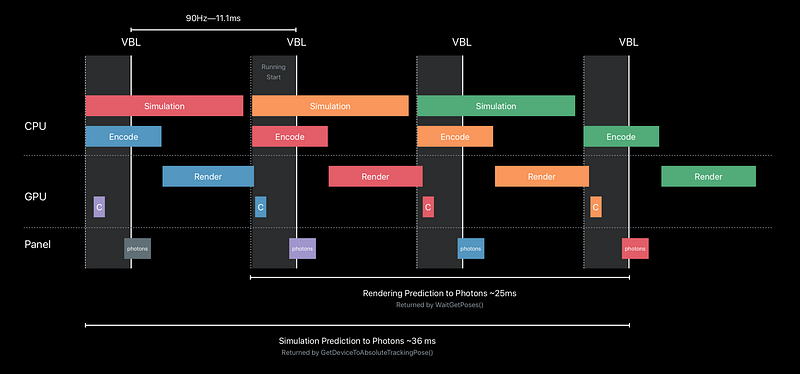
- Splitting command buffer encoding
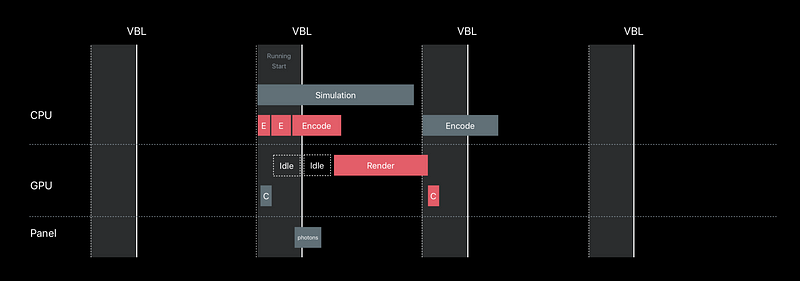
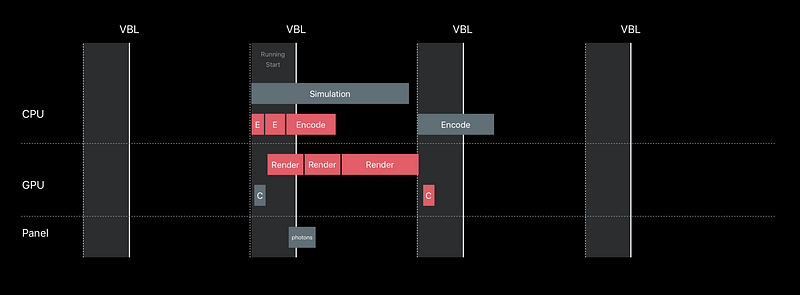
- CPU + GPU optimization

Advanced Frame Pacing
- GPU workload examples
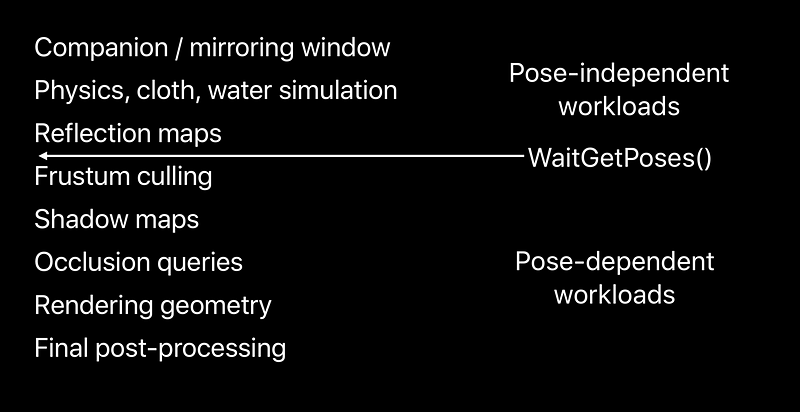
- Pose independent work 😡

- Multi-GPU workload distribution 😆
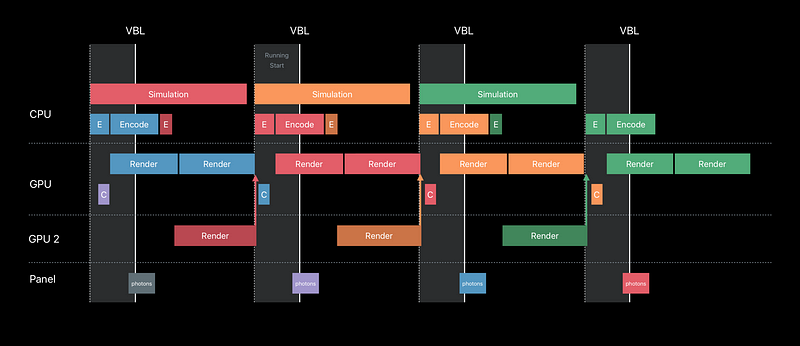
Multi-GPU Workload Distribution
- MTLEvent
- Mechanism of synchronizing GPU workloads
- Synchronizes across Command Queues - MTLSharedEvent
- Extends Event
- Synchronizes across GPU’s
- Can be shared between process
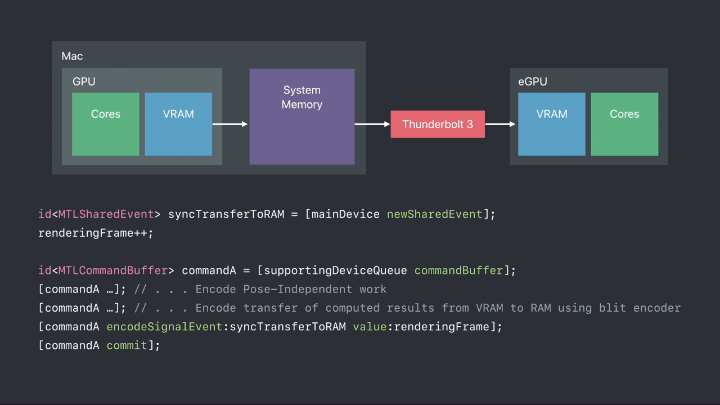
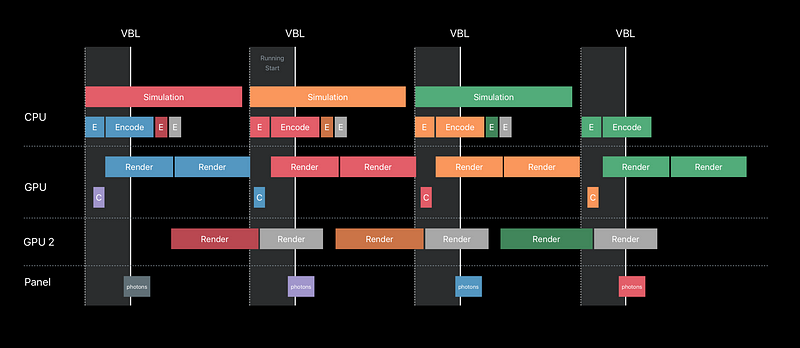
Increasing Resolution
Optimizing for Vive Pro

Reducing Fill Rate ⚠️
- Clipping invisible pixels
- Multi-resolution shading
- Monoscopic far-filed rendering
- Stereo shading reprojection
Clipping invisible pixels
Use StreamVr stencil mask to clip invisible pixels
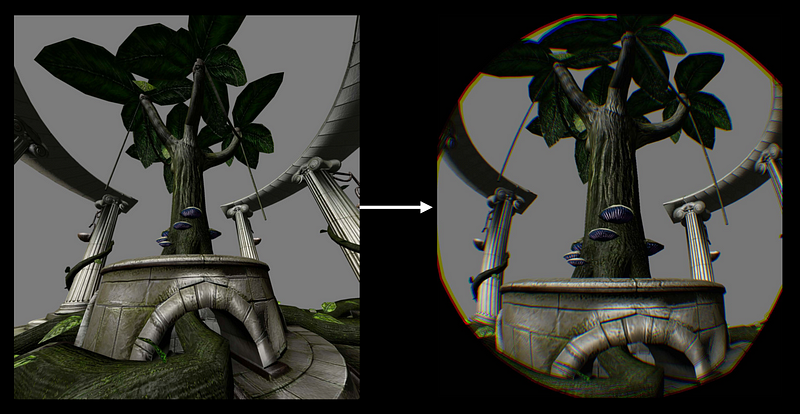
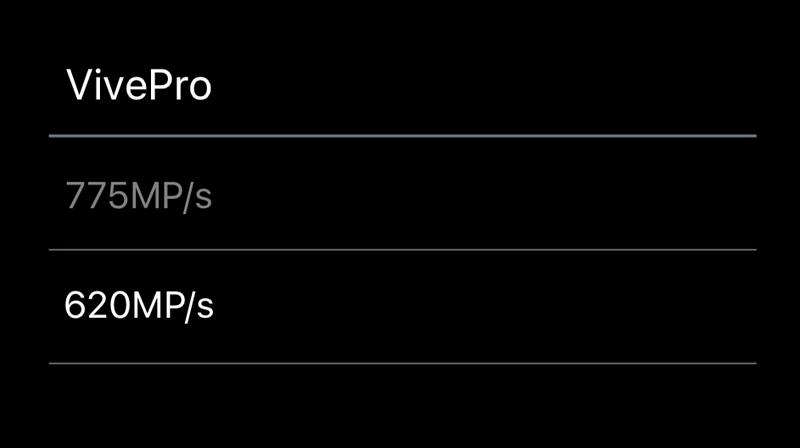
Multi-resolution shading
- Contribution of edge and corner regions
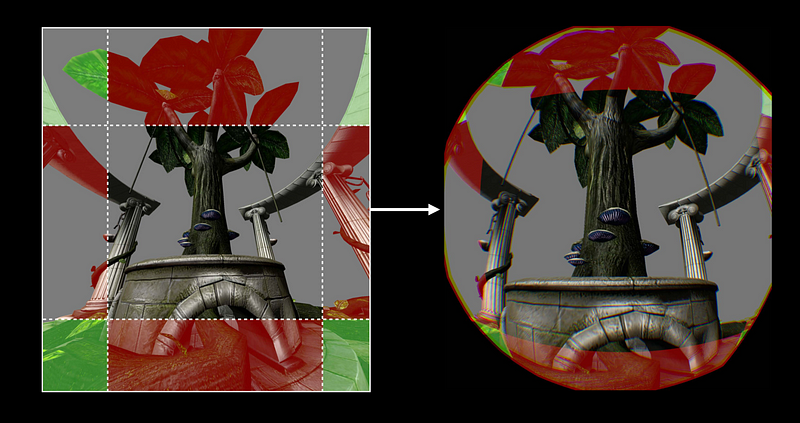
- Rendering edge and corner regions at reduced resolution

- Upscaling rendered regions to final resolution for submission

